Antique car outside of Titanic Museum in Belfast.

Ireland 2024 Log - Day 11
Weather: Reasonably pleasant. A little less windy. Cool temperatures.
- Relaxed morning recharging. Tammy and Mazie go for run. Jamie tends to photos and blog. Tyler sleeps in.
- Drive to Donegal.
- Brunch at The Old Stone.
- Shopping and exploring around The Donegal Diamond including Elvery Sports and Magee of Donegal.
- Drove to Rossnowlagh Beach.
- After two failed attempts to have Tyler and Mazie do a surf class, serendipity struck and we were able to get them learning to surf!
- Pick up breakfast items for tomorrow at the Bakery Shack.
- Drive to Cria Lodge so kids could get warm and dry.
- Drive back to Donegal for dinner at La Bella Donna.
- Drive back to Cria Lodge and walk a kilometer down the road (precisely the middle of nowhere) for a pint at Whoriskey’s Pub.
- Walk back to Cria Lodge to get packed and ready for early morning departure tomorrow. Alarm set to 6:30 AM.
Jump to day 1, 2, 3, 4, 5, 6, 7, 8, 9, 10, 11, 12, 13, 14, 15, 16, 17, 18 or see Ireland 2024 Collection.
Irish cows.

Today’s Guinness enjoyed at Whoriskey’s Pub outside of Ballyshannon.


Tyler and Mazie had a blast at their first surfing experience! Thank you Rossnowlagh Surf School! 🌊🏄♀️🏄♂️
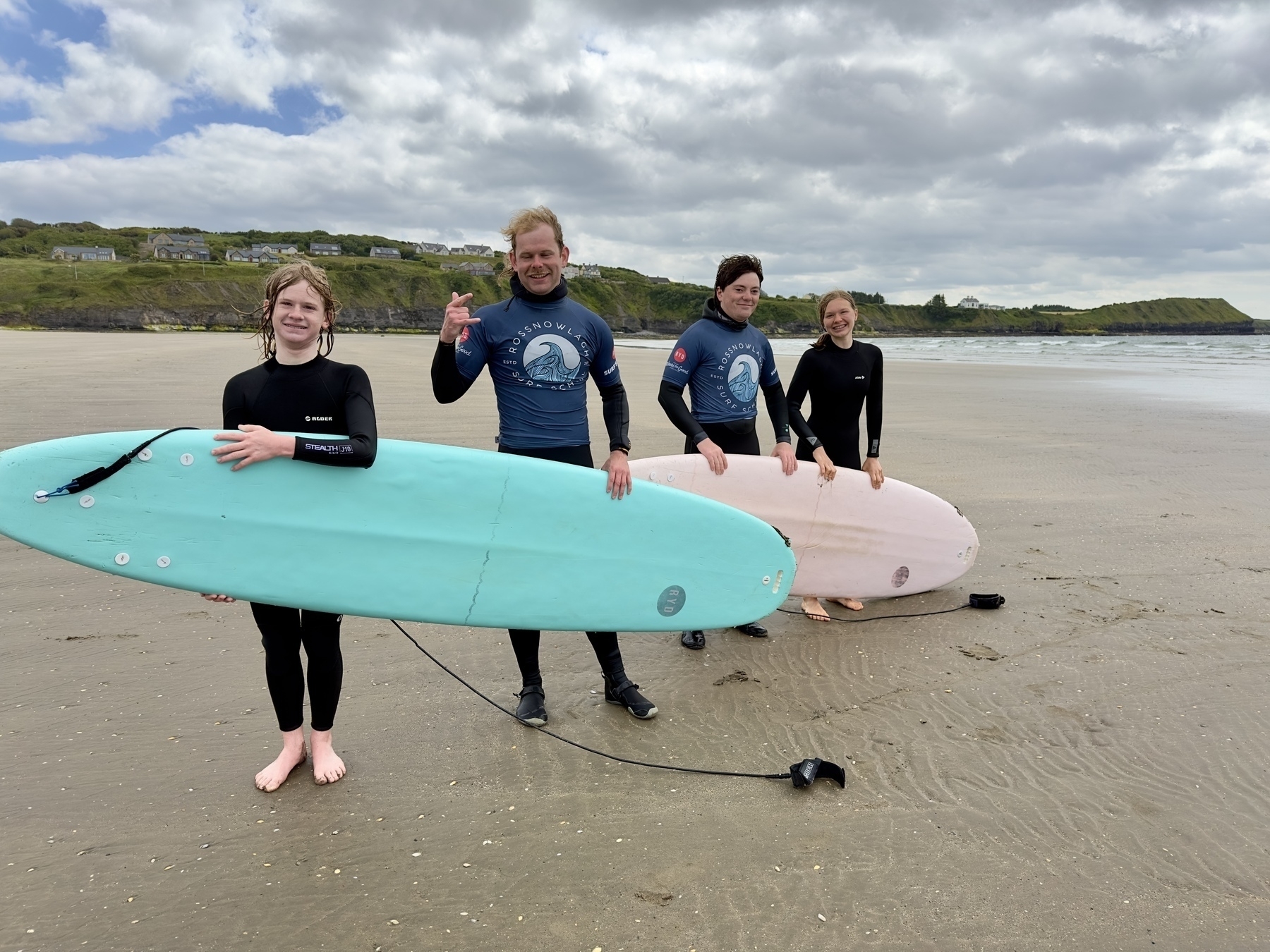
Having a cappuccino on the beach from Sunny Jim’s while the kids learn to surf. 55 °F with 15 mph winds.

Tyler and Mazie wanted to try surfing in Ireland and there are a number of places that do surf lessons but we weren’t having luck with any of them. Then we found Rossnowlagh Surf School on the beach and they were happy to have them join. 55 °F with 15 mph winds.
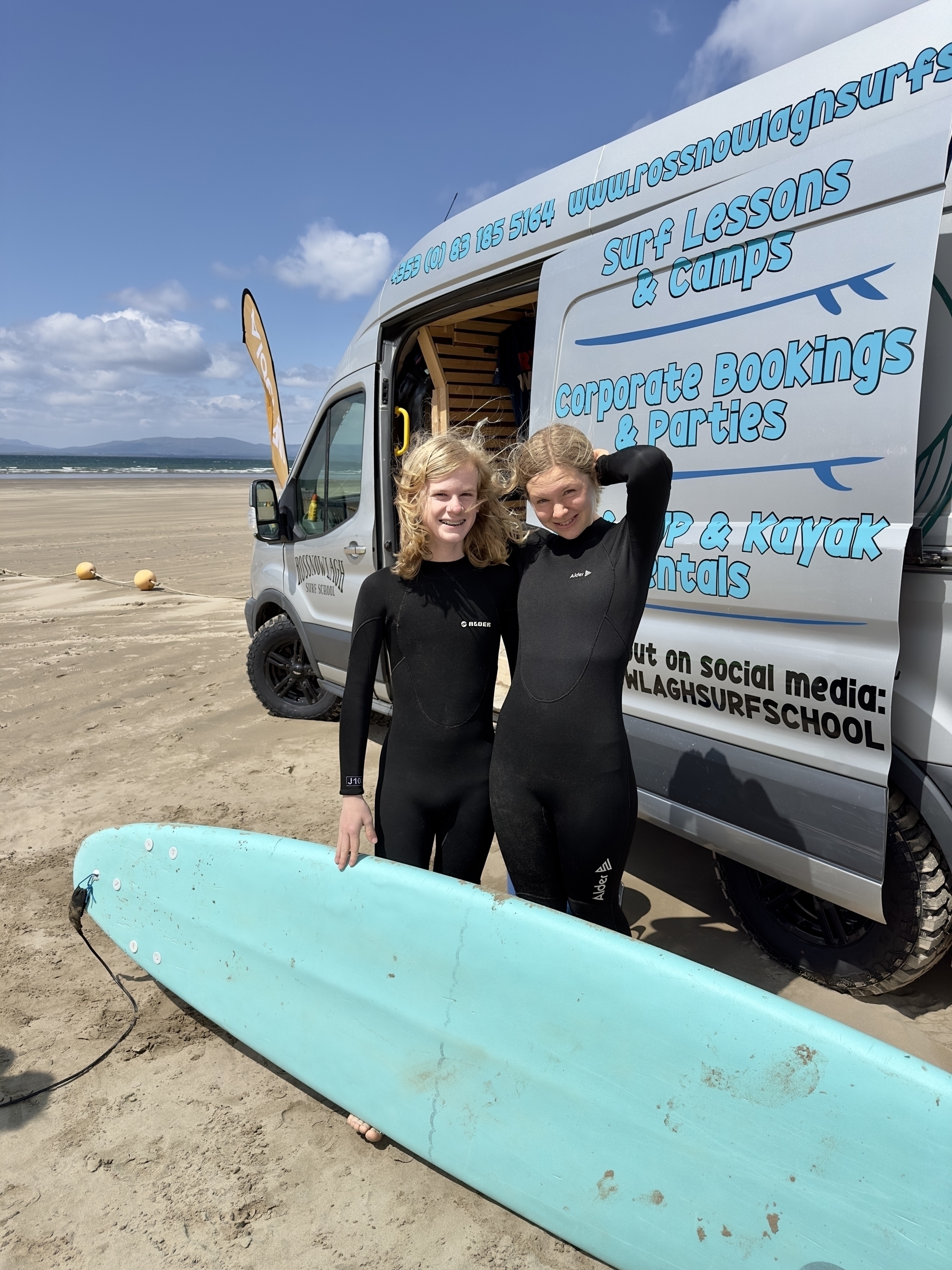
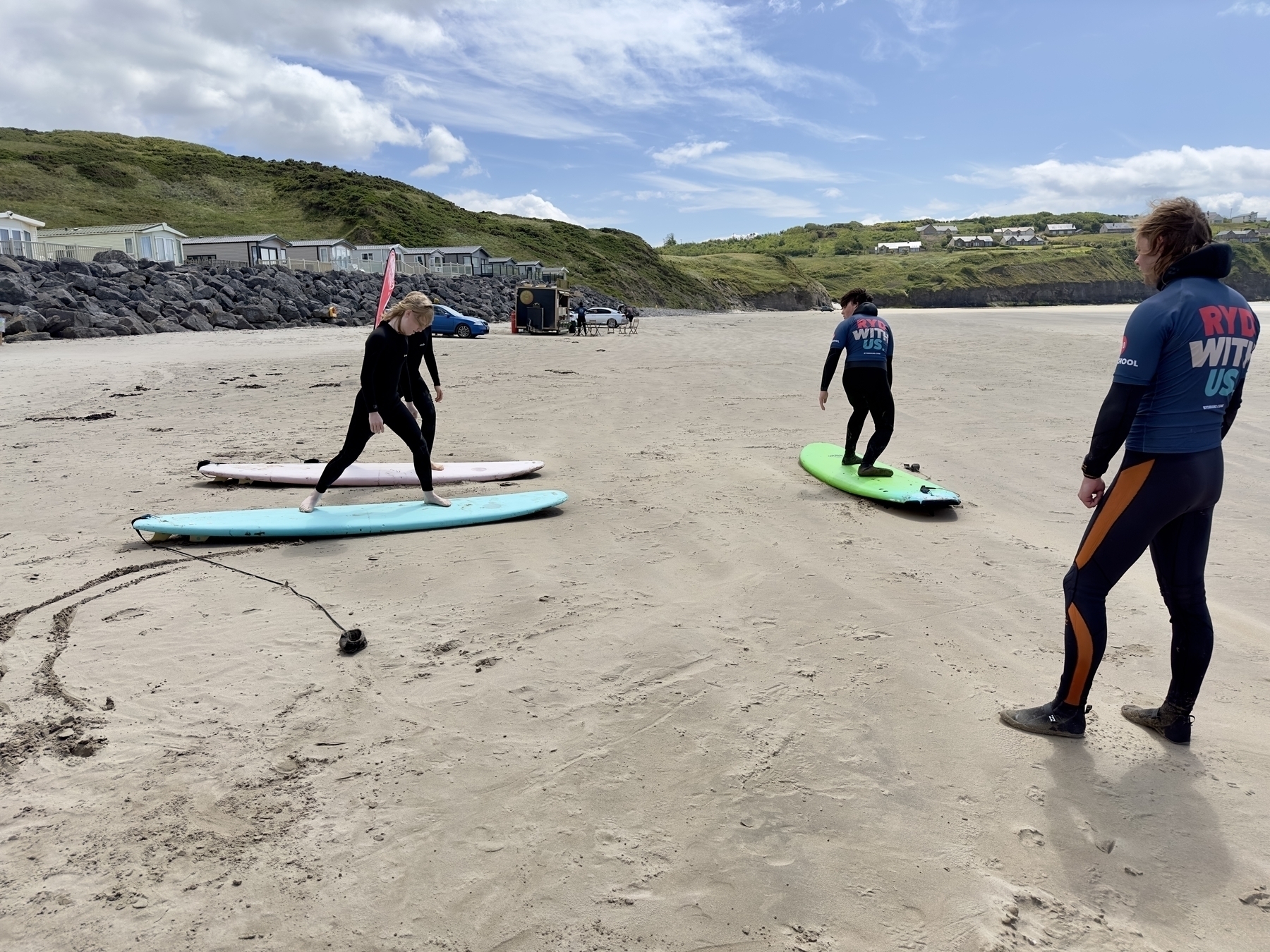
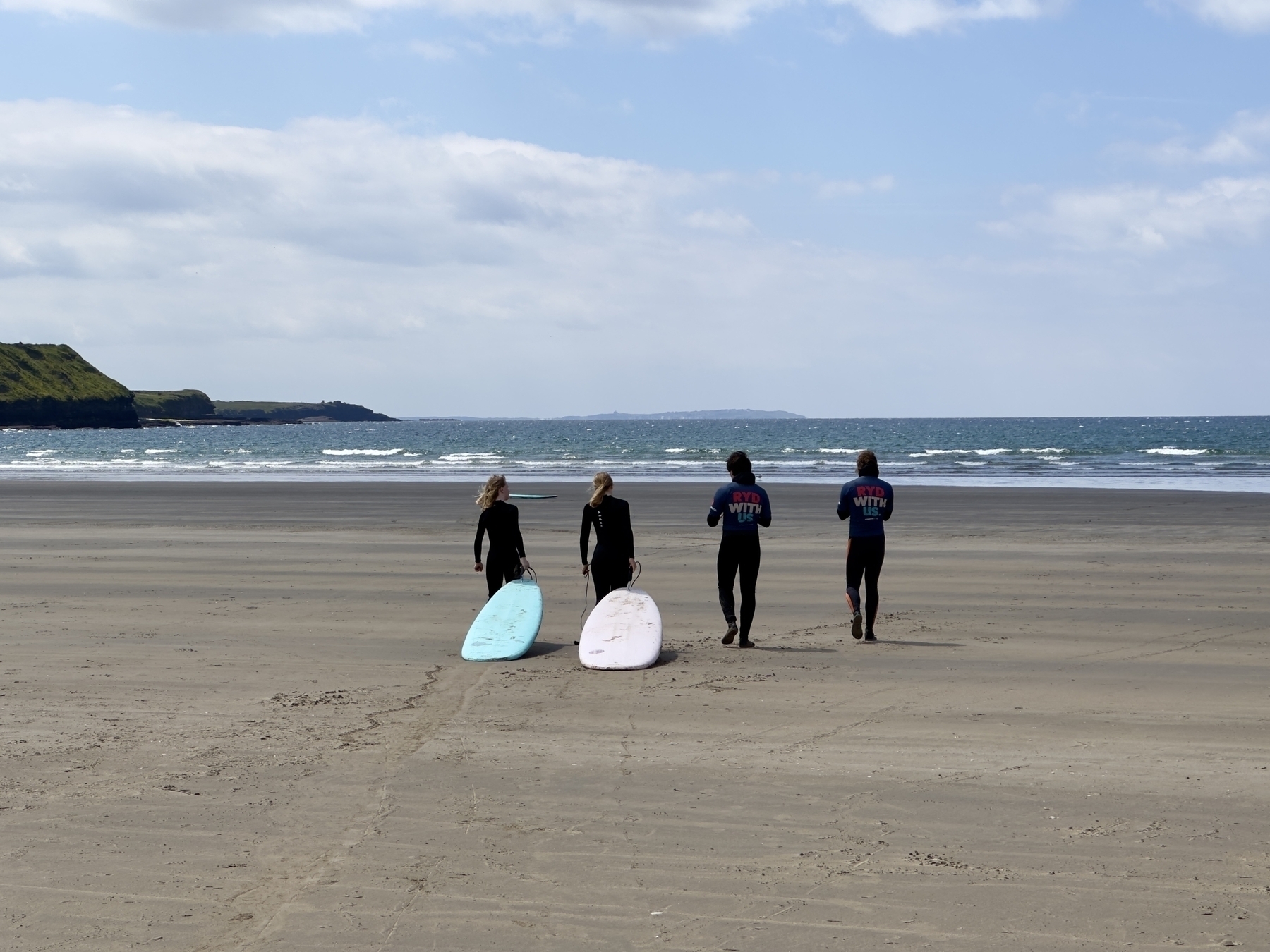
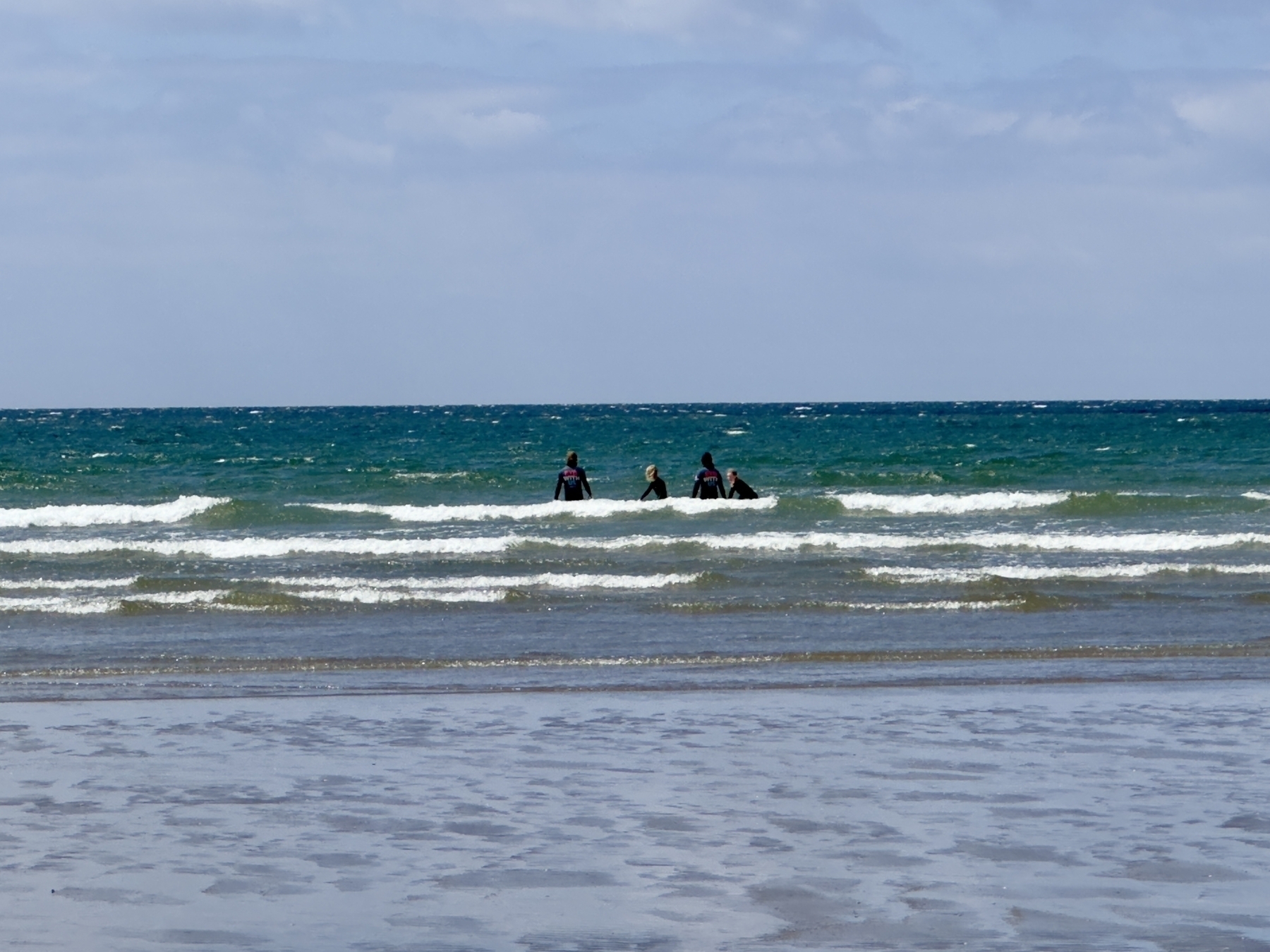
Ireland 2024 Log - Day 10
Weather: Overall good. Some sun. Kind of windy. Chilly but not too bad.
- Picked up to go baked goods and breakfast items at the Bakery Shack in Rossnowlagh.
- Drove to Teelin Pier.
- Took Sliabh League Boat Trips and got a tour of Sliabh Liag Cliffs from the water with Paddy.
- Lunch at The Rusty Mackerel.
- Coffee stop at Brew In Thru in Teelin.
- Drove to upper car park for Sliabh Liag Cliffs and hiked up to viewing location. Mazie hiked up beyond to a further point.
- Drove to Silver Strand Beach.
- Delightful time on this incredibly secluded beach.
- Started drive back to Airbnb.
- Stopped in Donnegal for food. Ended up having crêpes at Little Mamma’s as most dining options were closed.
- Fed the Alpacas at the Airbnb.
- Evening hot tub at Airbnb. Tammy gets an evening walk in.
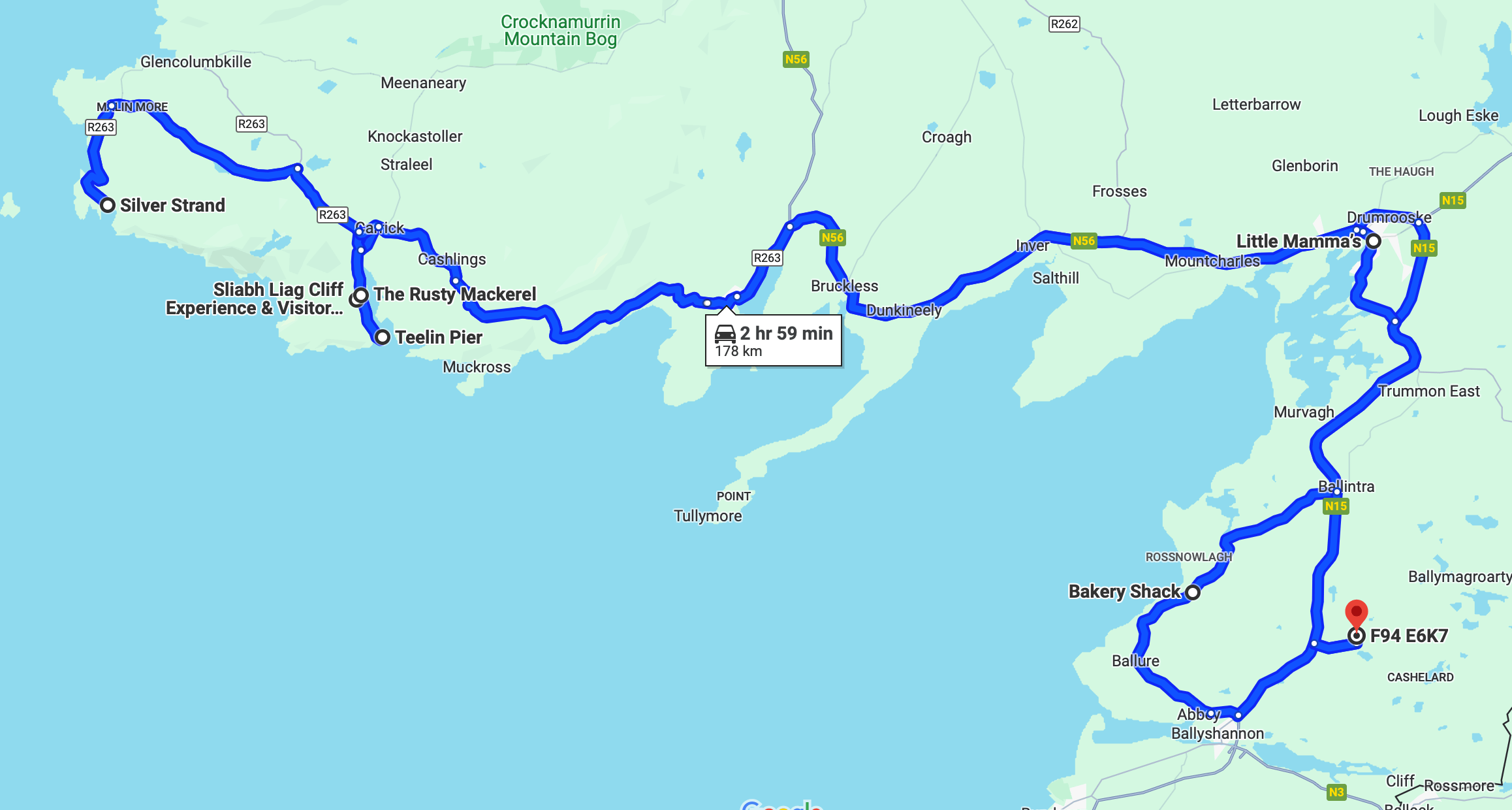
Jump to day 1, 2, 3, 4, 5, 6, 7, 8, 9, 10, 11, 12, 13, 14, 15, 16, 17, 18 or see Ireland 2024 Collection.
Mazie has been enjoying feeding the Alpacas here at the Airbnb.
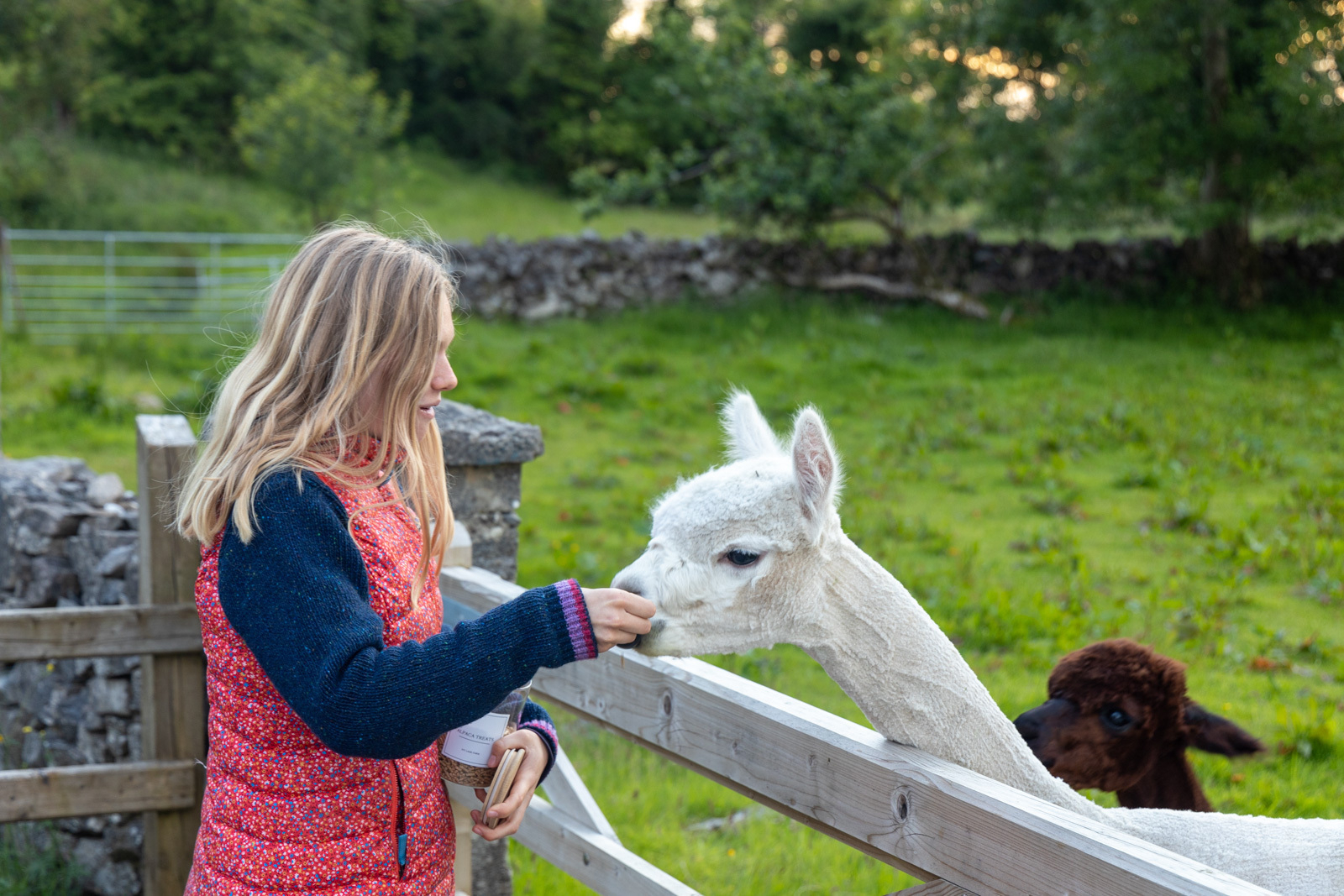
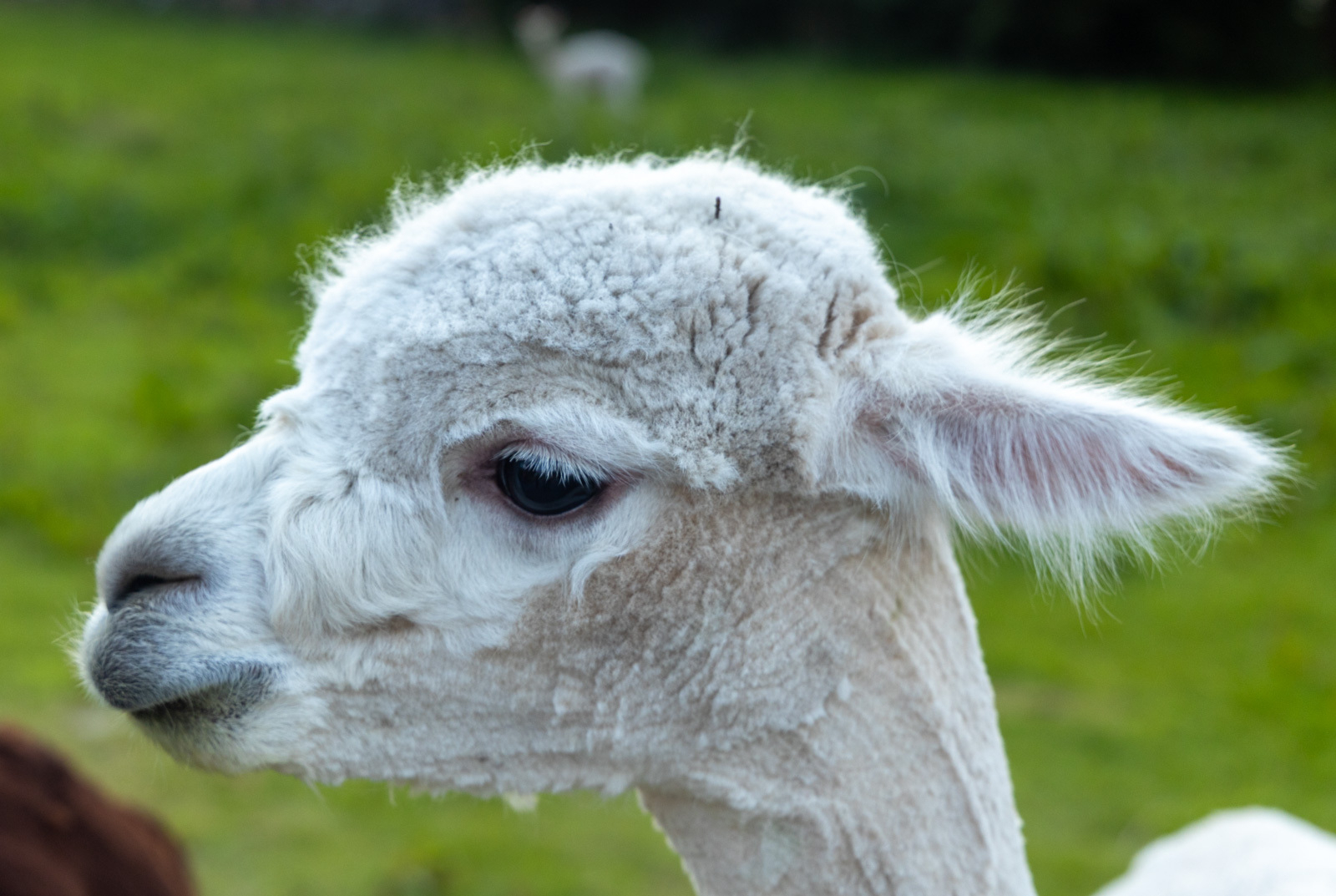
Today was filled with sheep as we ventured further north.



Silver Strand Beach
After taking in the Sliabh Liag we set the navigation to Silver Strand Beach about 30 minutes North. We drove through the most remote part of Ireland that we had experienced so far with tons of sheep everywhere, including some on the road. When we arrived we were greeted to one of the most picturesque beach scenes we’ve ever taken in. This beautiful harbor with a perfectly crescent beach that seemed almost undisturbed by anything. Including the four of us there were never more than 10 people on the beach.
Toward the end of our time we had a bunch of dolphins show up in the bay jumping out of the water and playing. It was incredible.


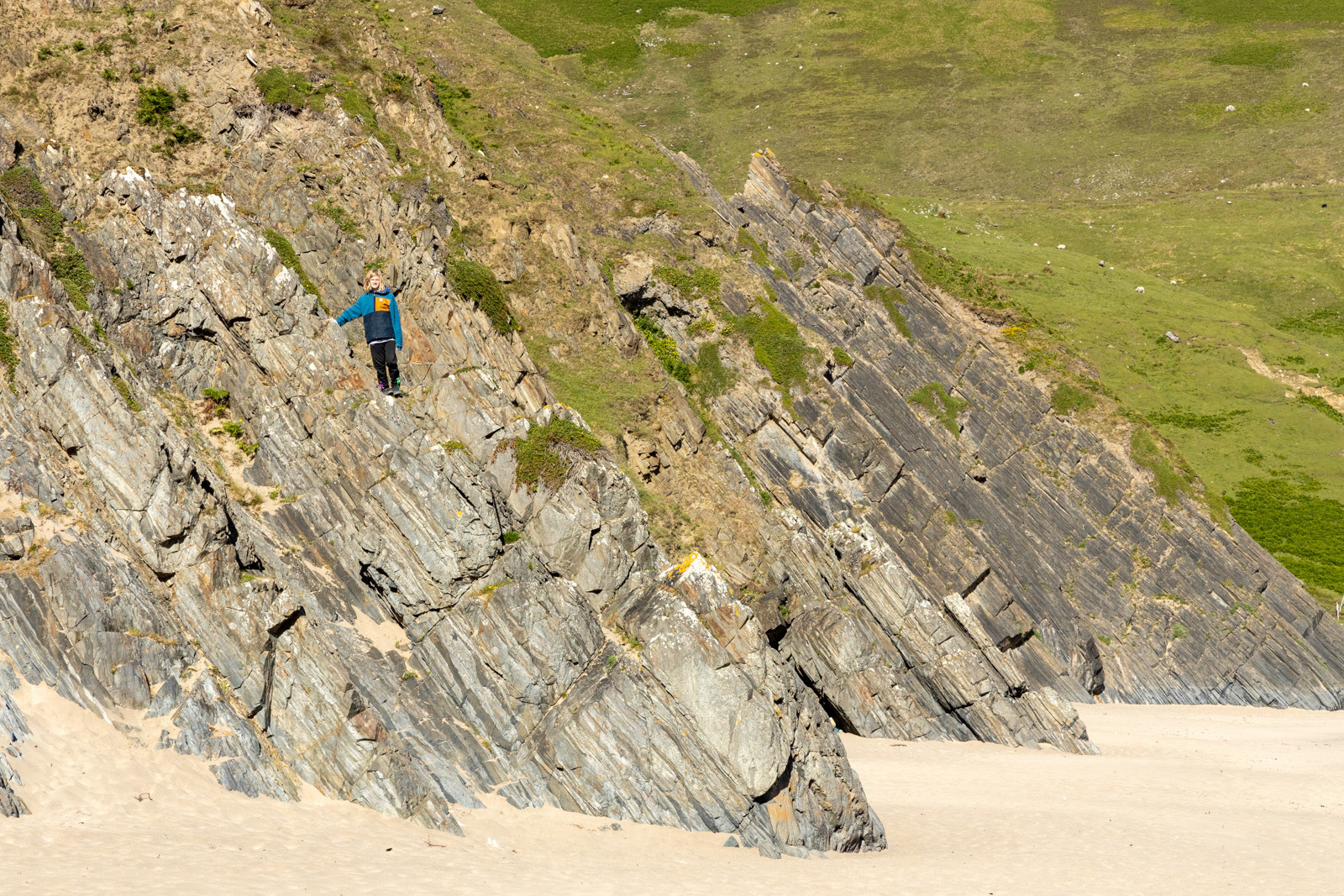





Sliabh League Hike
In the morning we took a boat tour to see Sliabh League from the water. We also wanted to see it from the surface on top as well. We made our way to the upper parking area for Sliabh League and then set out on foot to walk up to the viewing point at the top. It was a wonderful walk up. We got to the viewing platform and took it in for a while and then to Jamie’s chagrin Mazie decided to go up to the next point in the trail. Tammy and Tyler stayed back mostly to hang out with me while we waited for her return.
These spots are incredible and are over three times higher than what we saw at the Cliffs of Moher. However, the Cliffs of Moher at least appear to be more sheer in their drops. Sliabh League looks more mountainous with plenty of vertical drops as well.

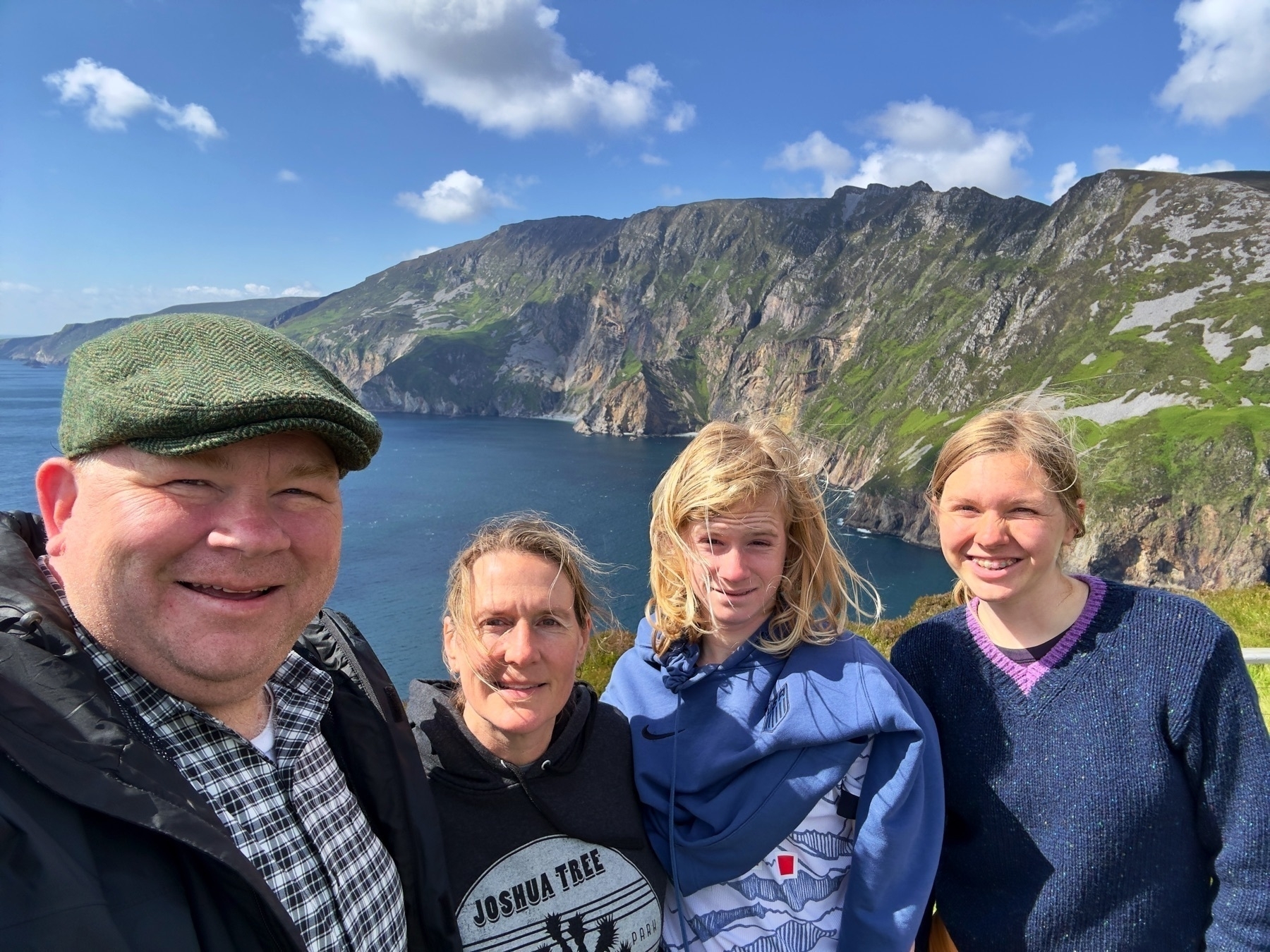
Today’s Guinness at The Rusty Mackerel.


Sliabh League Boat Trip
We met up with Paddy at the Teelin Pier this morning to take his Sliabh League Boat Trip to see the Sliabh Liag cliffs from the water.
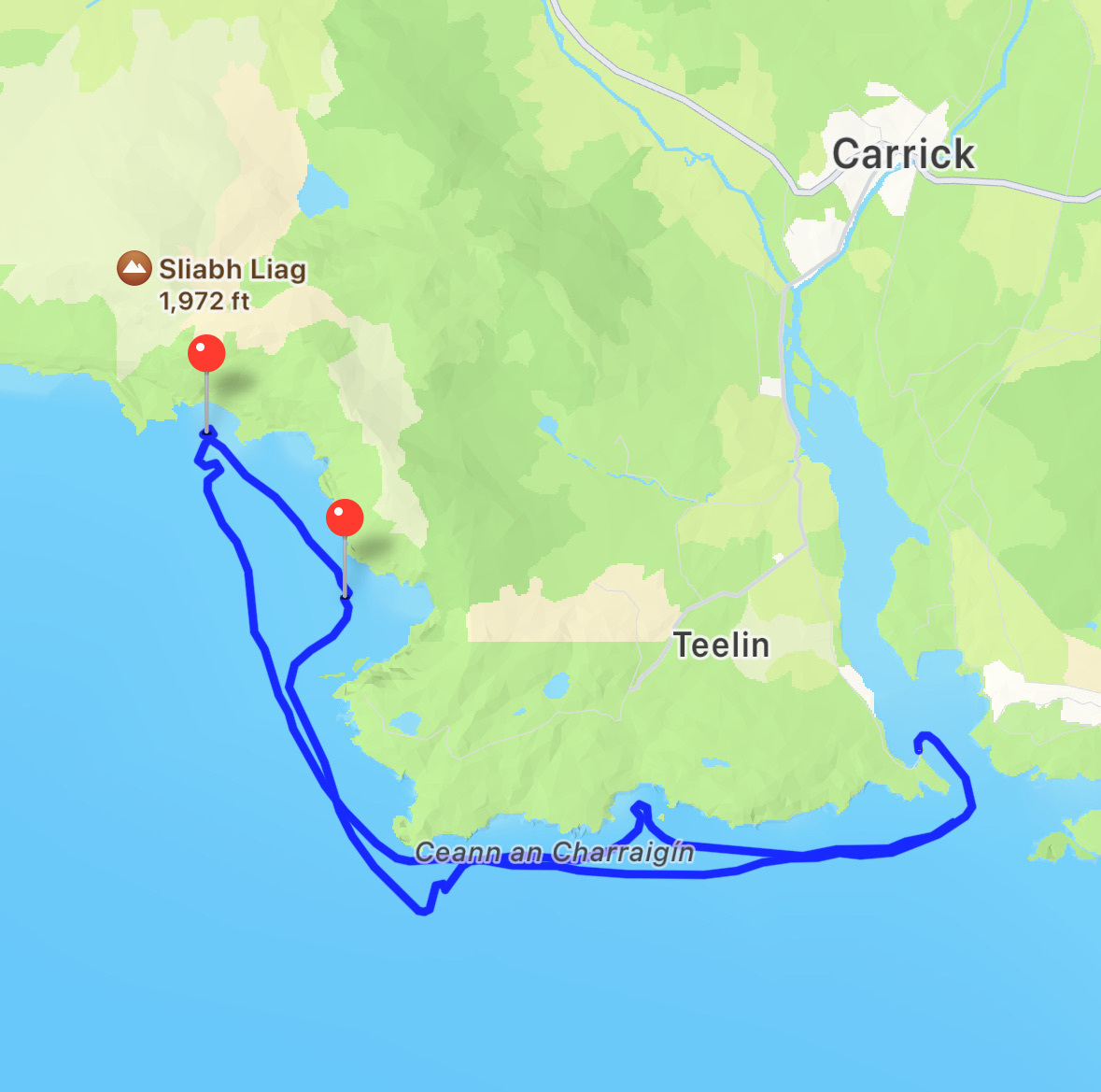
These cliffs are the highest in Ireland, rising three times higher than the Cliffs of Moher. The rock formations were incredible and the scene was more like mountains.








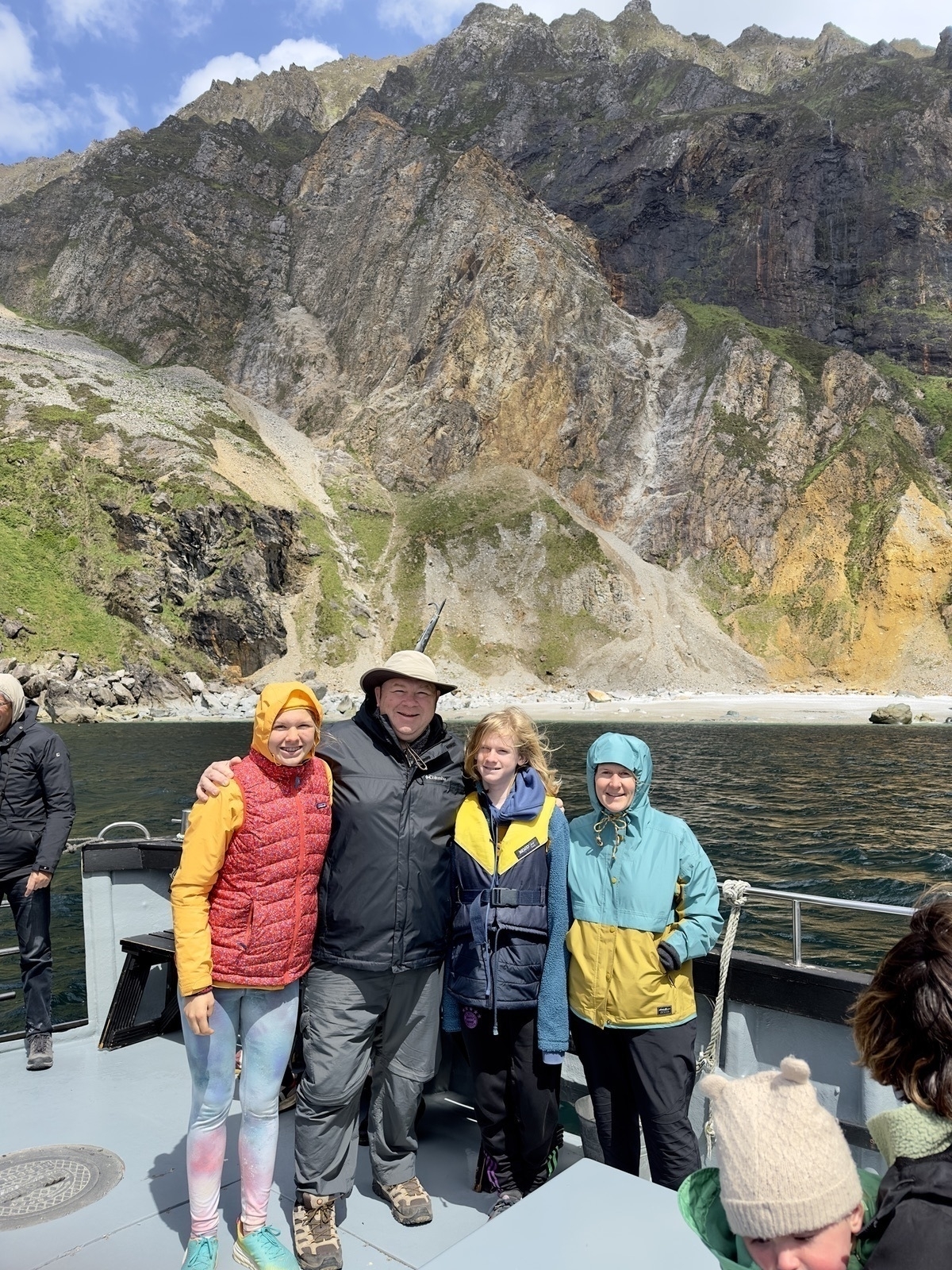
Ireland 2024 Log - Day 9
Weather: Cool with gentle but steady rain much of the day.
Today was a longer transit day starting in Doolin and making our way to Ballyshannon for the next stop.
- Left Doolin at 8 AM.
- Drove to Galway.
- Breakfast at Dela.
- Shopping and exploring in Galway: Port West (Tyler Jacket), Butler’s Chocolates (Truffles), Aran Sweater Shop, Weavers of Ireland, Intersport, Life Style Sports (Tyler Jersey), EuroGiant (Tyler Fan), Coffeewerk + Press (Jamie Mug), Wooden Heart (Mazie Maileg Mice), Le Petite Delice (Jamie Scone), Harper (Tammy clothes), The Sheep, and Murphy’s Ice Cream.
- Checked out the Galway Market.
- Drive to Ashford Castle.
- Go on a Hawk Walk!
- Drive to Bundoran.
- Dinner at Blue Leaf.
- Continue to Cria Lodge to check-in.
- Try out hot tub for our first night.
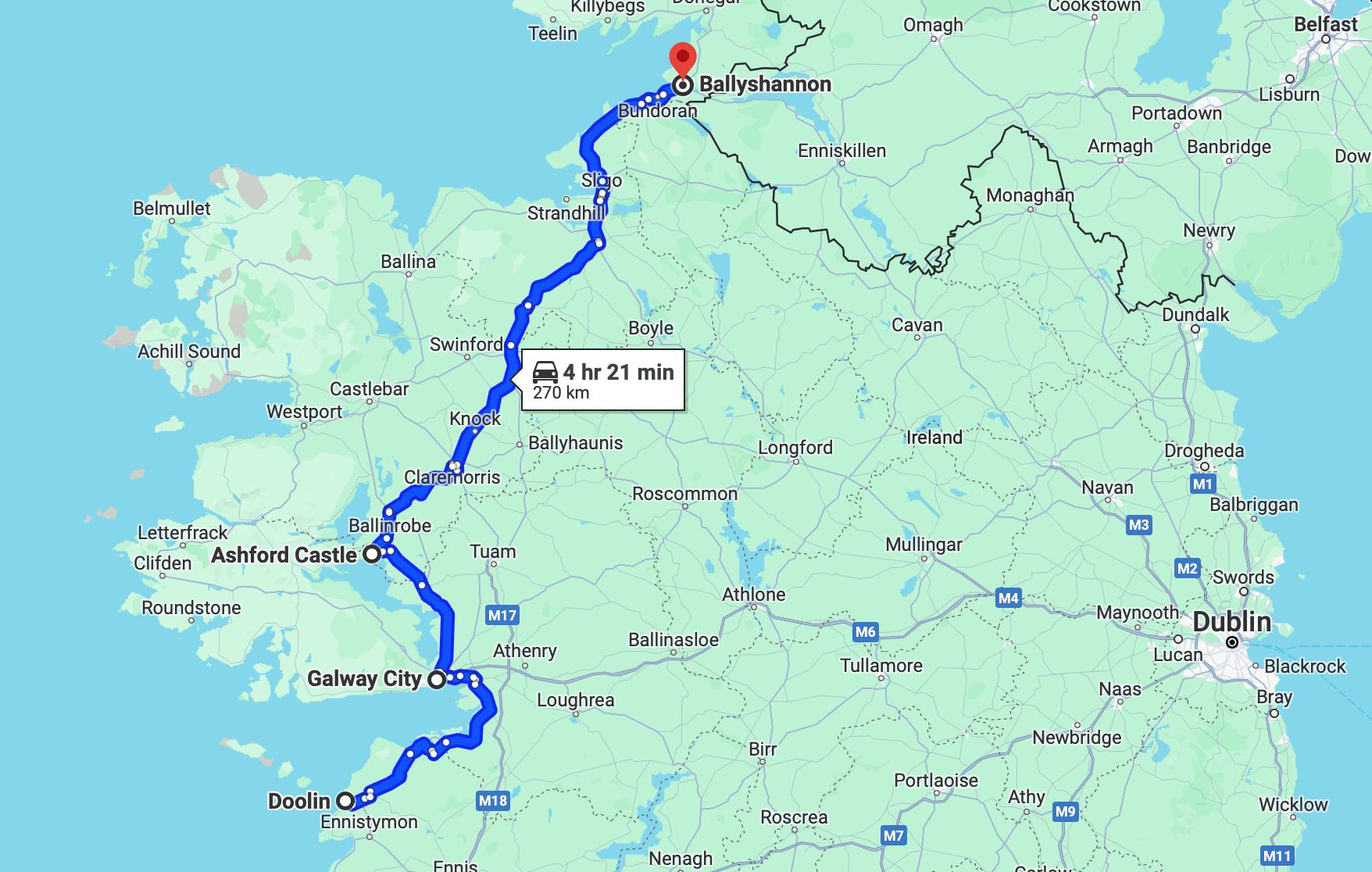
Jump to day 1, 2, 3, 4, 5, 6, 7, 8, 9, 10, 11, 12, 13, 14, 15, 16, 17, 18 or see Ireland 2024 Collection.
Guinness in the hot tub tonight outside of Ballyshannon.

The kids meeting the Alpaca that live here at Cria Lodge.
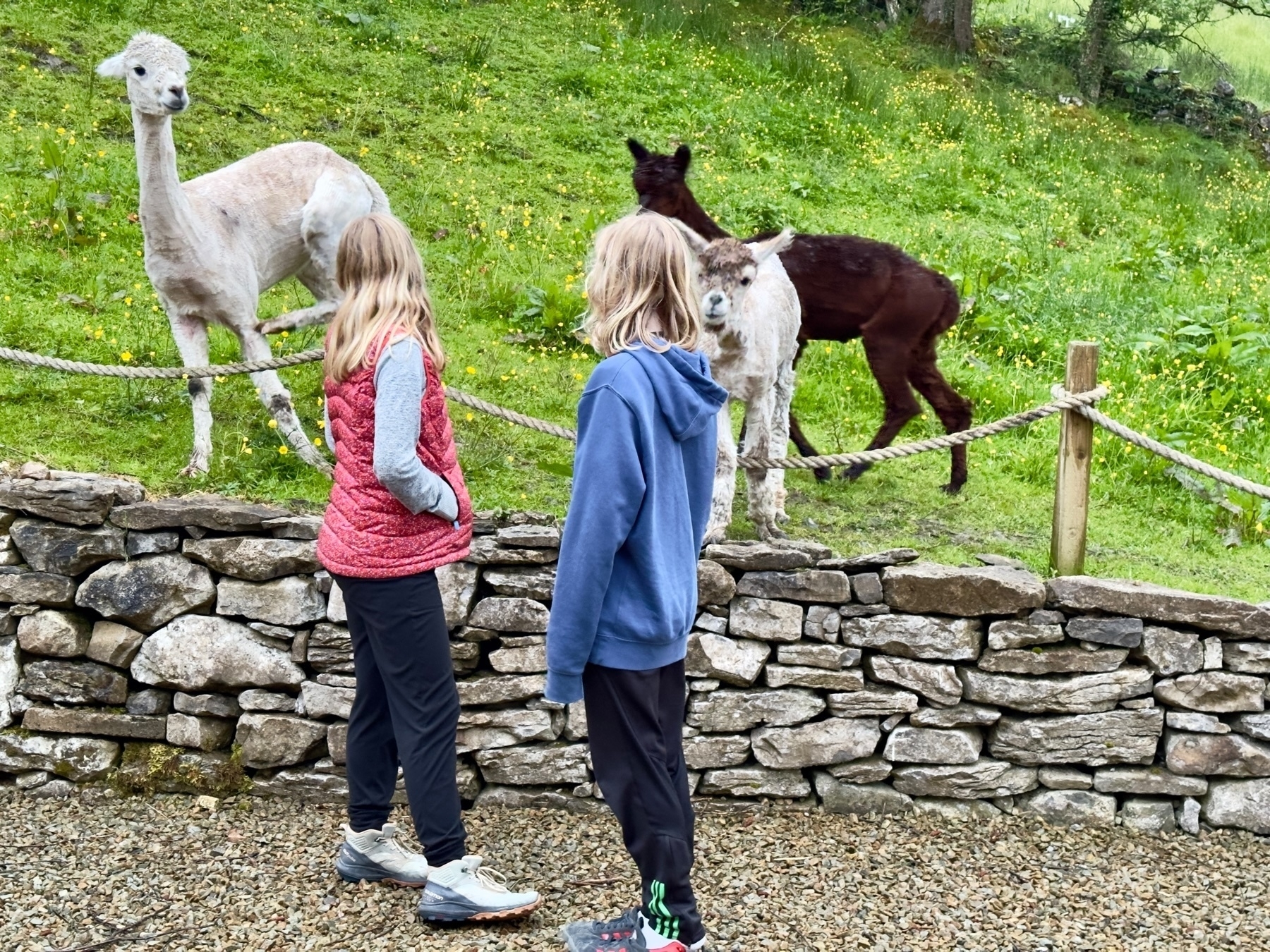
Hawk Walk at Ashford Castle
If I was living hundreds of years ago I would like to have been a person that hunted with a hawk.
On our way to Ballyshannon we stopped at Ashford Castle to experience a Hawk Walk. After completely missing the car park on the first round through we found ourselves back outside the castle grounds getting more thorough directions from the gatekeeper who found us quite amusing. The second time through the gorgeous estate we found it. The castle and estate were amazing on their own. The Guinness family owned it at one point.
We made our way on a nice 10 minute walk through the grounds to the Ireland School of Falconry and started our Hawk Walk with a tour of the facility and seeing some of the 32 hawks that they have there. The Harris Hawks that we would walk with are unique in that they hunt like a pack. They work cooperatively.
We all took turns with Mazie and Tyler starting out with the hawks. We took Walnut and Chestnut out for the walk. The hawks came to the glove quick and obviously knew that the morsels of rat were waiting for them.
We went out on the walk and it was incredible to have these hawks pacing along with us as we went. Anytime you raised the glove they would immediately come. We would then launch them off again and they would fly away. In between they would survey the area and swoop in around us joining along on the walk. Their speed was amazing. They can routinely go 60 miles an hour.
An amazing experience made even more incredible with Ashford Castle as the backdrop. Photos don’t capture this experience that well but the videos really do. The power and grace when the hawk lands on the glove was inspiring.

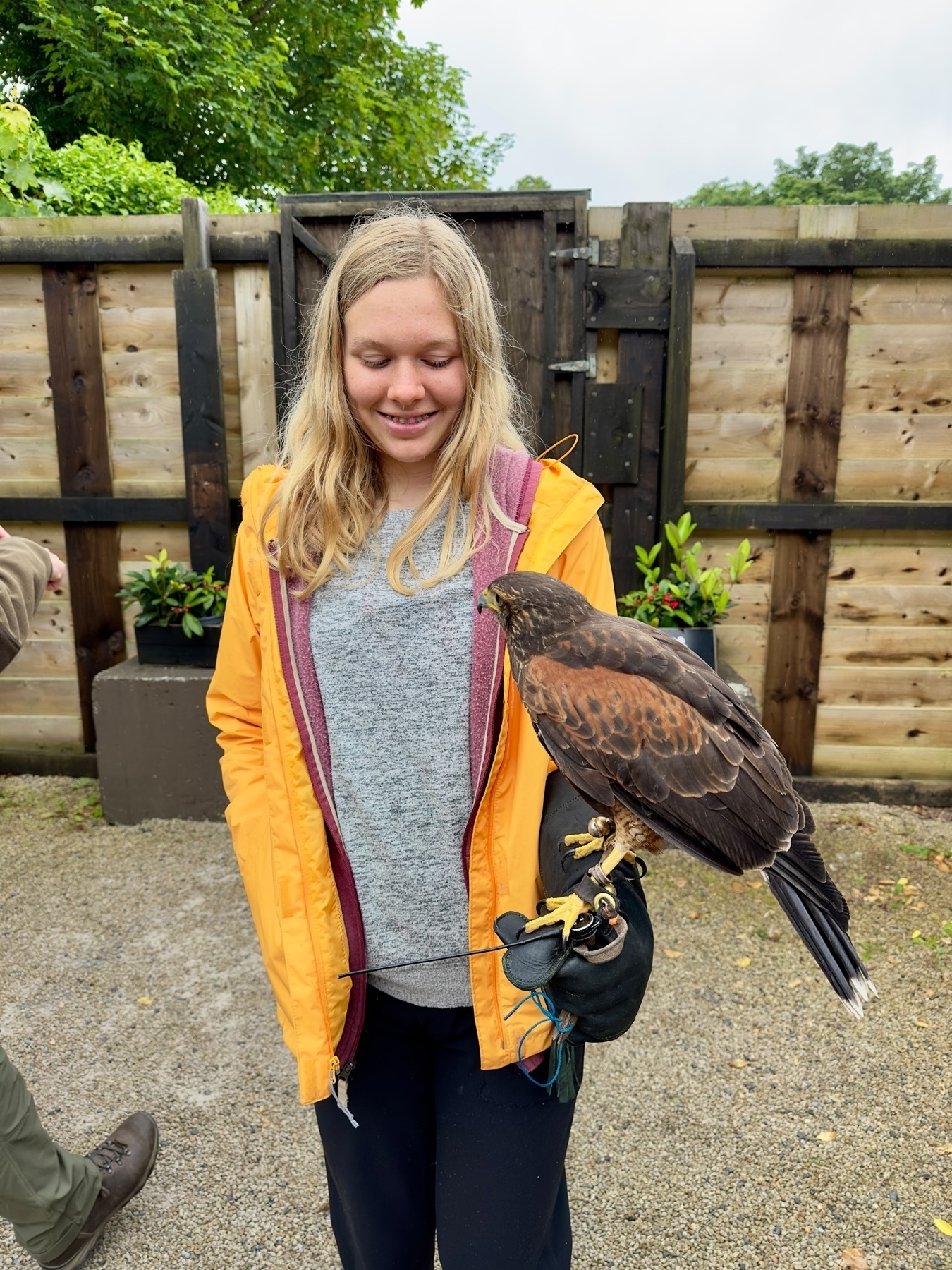
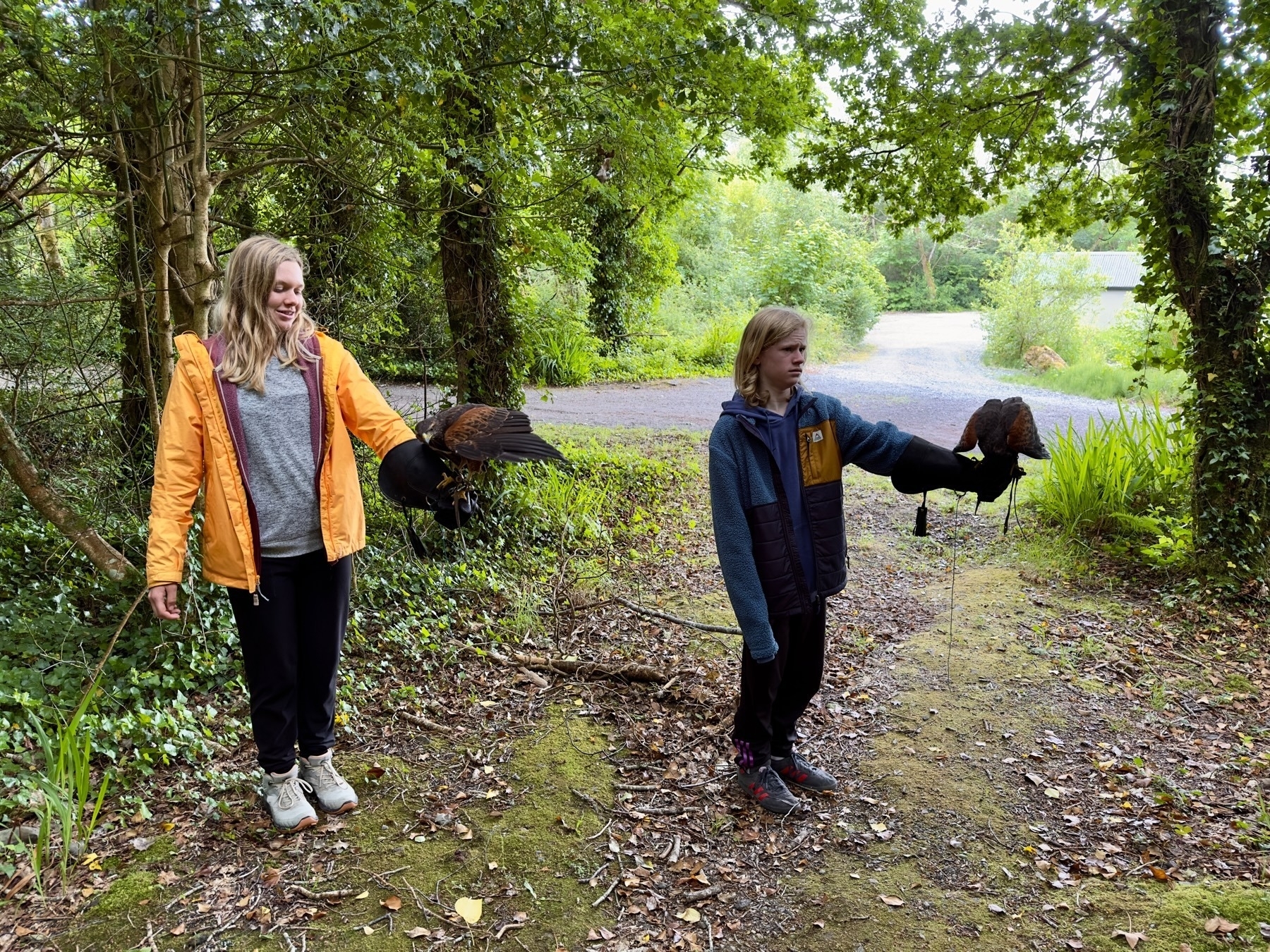
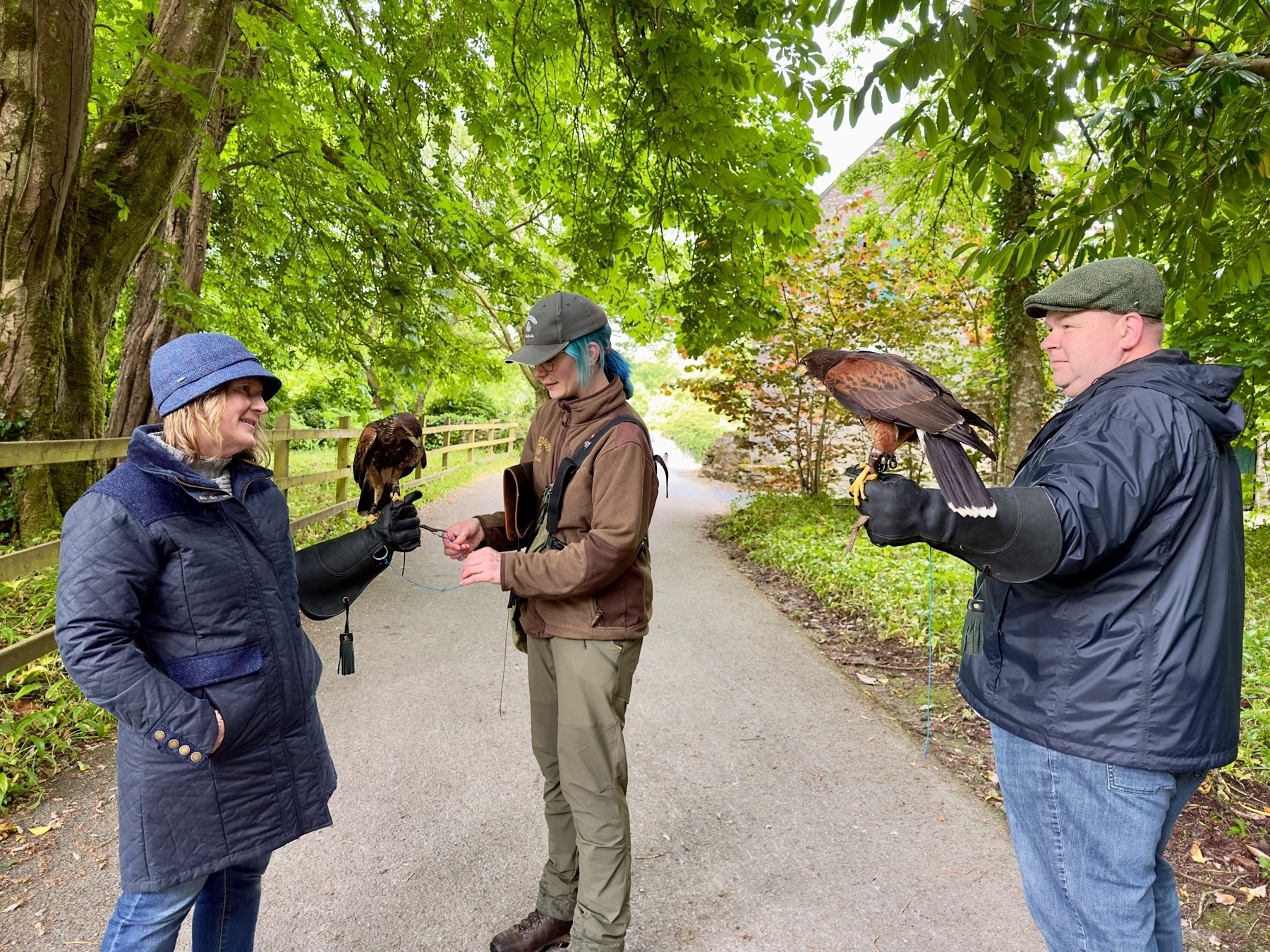
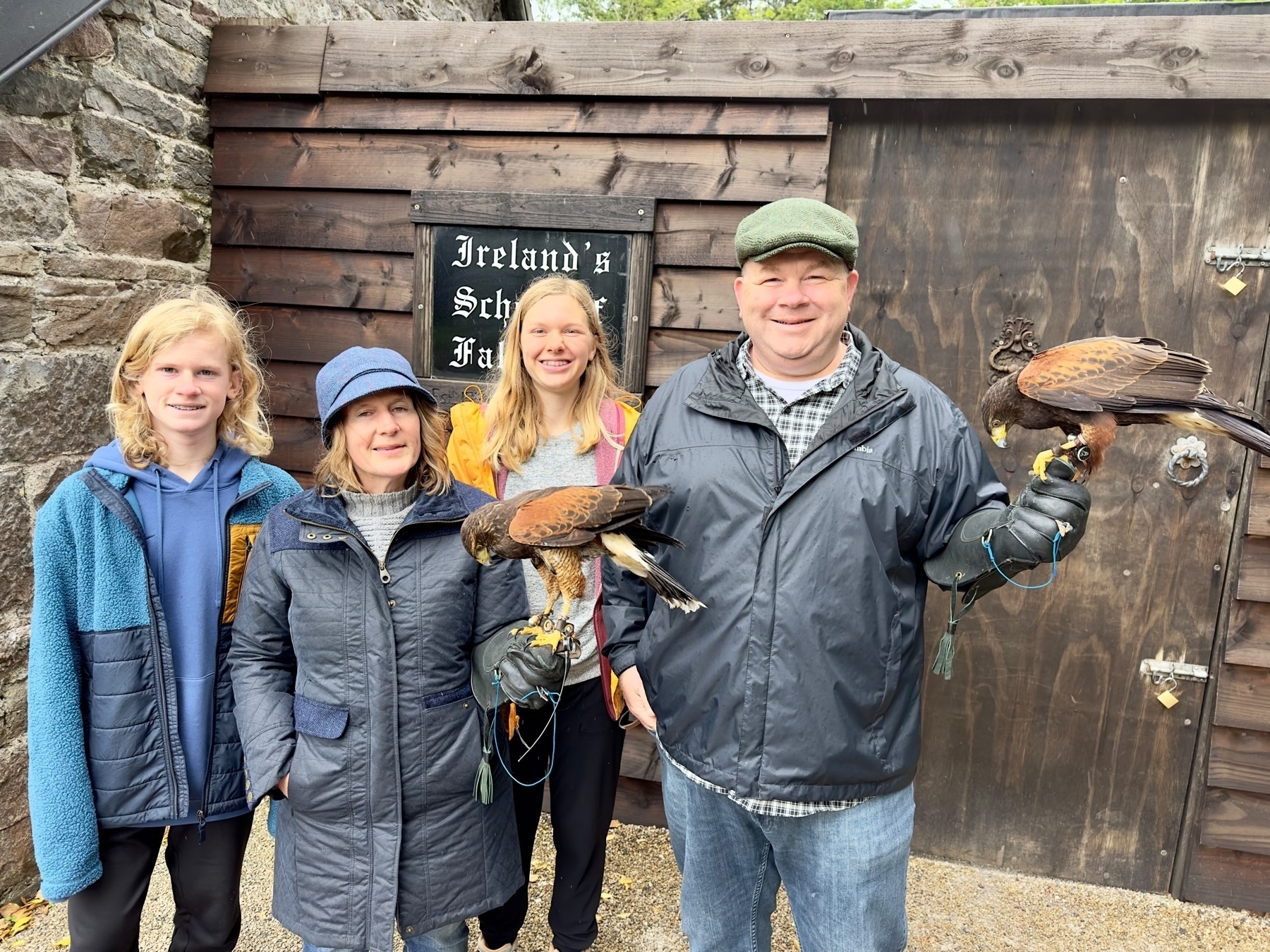
Enjoying a flat white from Coffeewerk + Press in Galway. Love the graphics on their cups. Delicious coffee.
